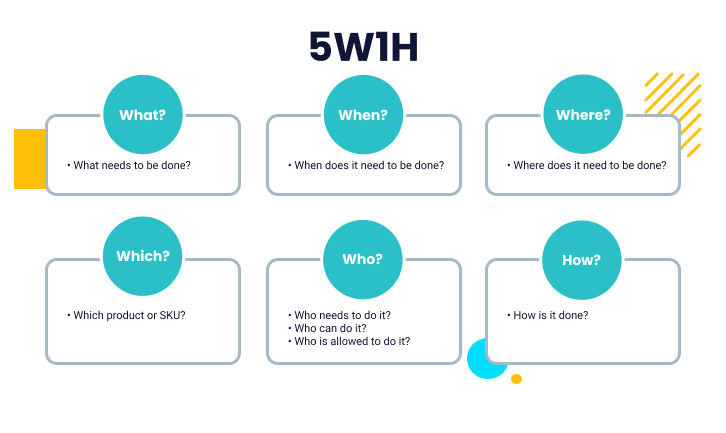
Introducing Skill Management: a 360-degree overview of Skills and Competencies
And. We’re. Live! 4Industry’s Skill Management module has just been released, bringing manufacturers a new, intuitive, and fully digital way of managing the skills, competencies, and certifications in their factories.

Why Manufacturers Need Digital Skill Management
4Industry’s new Skill Management module is the final piece in the puzzle of our vision of the connected manufacturing worker.
To give you a little bit of background, we originally based the structure of our Connected Worker Platform on the 5W1H framework.
In other words, if an operator is to do a job effectively and efficiently, he should immediately know what to do, when to do it, which product/SKU to do it to, where to do it and how to do it.
All of these w’s already supported in 4Industry with modules such as Knowledge Management, Task Management, and digital work instructions.
But as you can see, the only thing missing in this equation is the who.
So why is the who so important?
Well, in manufacturing, deciding who should do a task isn’t as easy as assigning it to a seasoned or seemingly competent operator. Certain tasks need to be performed by qualified personnel to guarantee that they are performed safely and don’t cause any problems down the line. Moreover, if the wrong person is picked to perform a task, manufacturers risk being uncompliant.
And this is why we developed our Skill Management module: to give manufacturers a 360-degree overview of their workers’ skills, competencies, and certifications—naturally, all of it fully digitalized.

Entering the Matrix
At the core of our Skill Management module is what’s called a skill matrix, which is a grid that displays information about your employees’ skills and competencies.
Here’s an example of a skill matrix in 4Industry:

The purpose of these matrices is that managers can easily decide if an operator
- Can do the job
- Is allowed to do the job (possesses the right certificates)
- Is able to do the job safely
In many factories, this information is kept track of in Excel or sometimes even on whiteboards or paper. The disadvantages of this should be self-evident: lack of user-friendliness, risk of information being outdated or lost, and so on.
How digital skill matrices work
First, managers are able to define the job roles in their factory. For example: operator, engineer, and technician.
Each role goes paired with a set of skills. For example, an operator may need to know about SMED, autonomous maintenance (AM), and so on.
These skills are then sub-divided into levels: beginner, novice, expert, and trainer.

This gives managers a good view of their operators’ capabilities. If an AM task needs to be done, a manager is able to see, for instance, that John is an expert in AM, while Matt is only a beginner.
But the matrices give even more granular information. Certain skills require certificates to be performed, certificates which expire after a certain amount of time.
Through our intuitively designed user interface, managers are able to see at an eyeglance who owns a certificate and which certificates are about to expire, ensuring they can be re-obtained in time.
Finally, filtered matrices can be created in an instant. This allows users to tailor a matrix to perfectly fit their area of interest—e.g. safety or quality.
4Industry’s Skill Management: a short demo
Interested in getting a more extensive, personalized demo of our Skill Management functionality or any of our other use cases? Request your demo here!
Related Articles

How to ensure social distancing in manufacturing

4 Ways digital helps manufacturing during COVID-19

